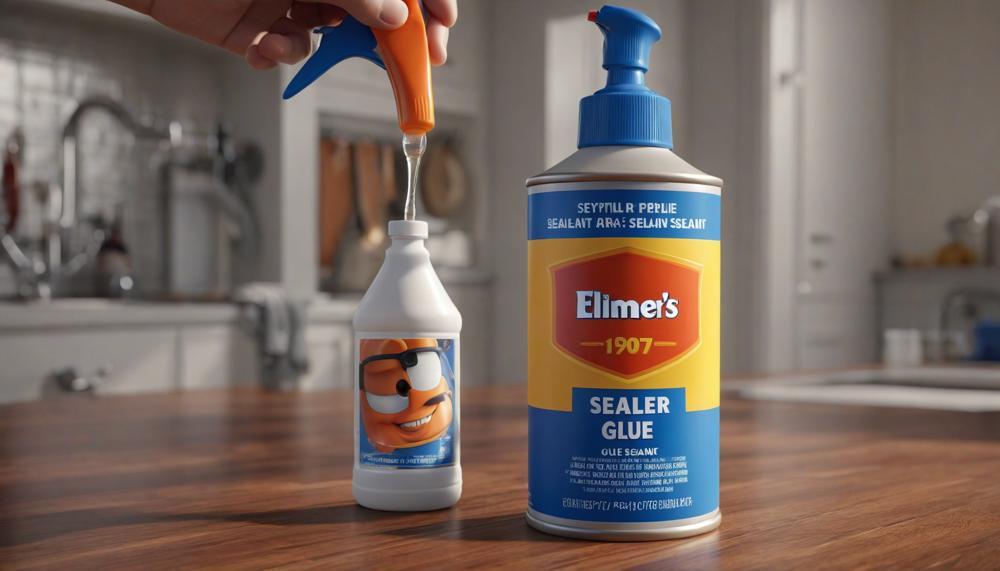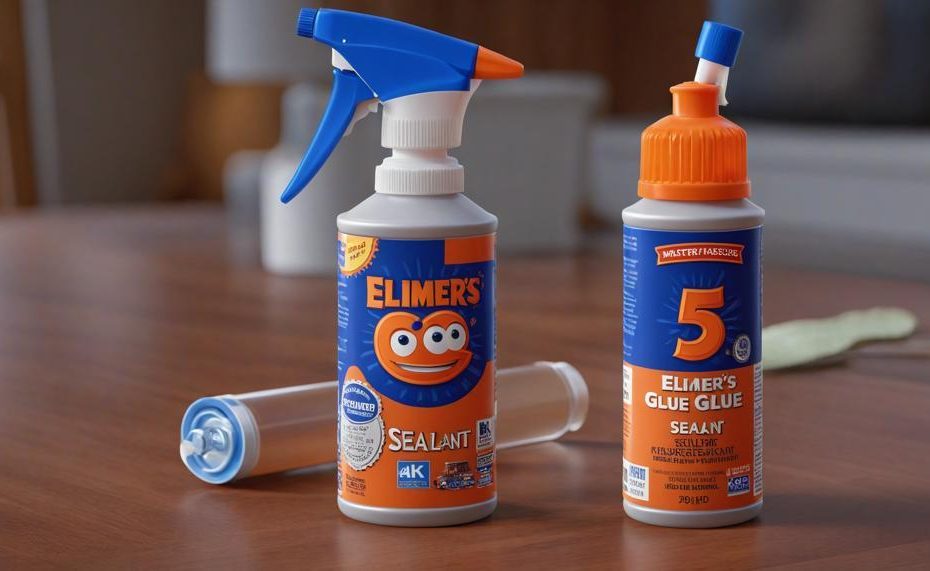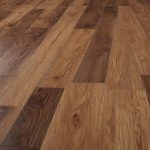The short answer is yes, but with some important caveats. This versatile adhesive can create a protective barrier on porous surfaces like paper, wood, and fabric when applied properly. However, it may not be the best long-term sealant option, especially for outdoor projects.
Key takeaways:
• Elmer’s glue dries clear and non-toxic, making it handy for crafts
• Thin layers brushed on can seal and reinforce items
• Creates a temporary, semi-flexible seal on porous materials
• Not waterproof or UV resistant for exterior use
• Degrades over time, may need reapplication
While convenient in a pinch, relying solely on Elmer’s as a sealant has limitations. For serious sealing needs, dedicated sealants and finishes are recommended. But for quick, kid-friendly craft projects, this household staple can provide a simple sealing solution when used judiciously. The real question is – what clever uses will you find for this unexpectedly versatile glue?
Table of Contents
What is Elmer’s Glue?
Elmer’s Glue, the quintessential white adhesive, stands apart from its counterparts due to its unique composition and versatile applications. Crafted from a polyvinyl acetate (PVA) emulsion, this liquid marvel dries transparent, granting it an edge over traditional glues that often leave unsightly residues.
Its non-toxic nature renders it safe for classroom projects and household endeavors alike. Moreover, Elmer’s Glue boasts waterproof qualities once cured, transforming it into an effective sealant for porous materials like paper, cardboard, fabric, and wood.
While not designed for heavy-duty sealing tasks or outdoor applications, its affordability and ease of use make it a beloved companion for DIY enthusiasts seeking a reliable adhesive that can double as a protective barrier. Elmer’s glue truly embodies the spirit of versatility, merging functionality with accessibility.
Unlike industrial-grade adhesives laden with harsh chemicals, Elmer’s Glue’s gentle formula allows for effortless cleanup with water, further endearing it to crafters and parents alike. Its ability to form a tight bond with diverse surfaces, coupled with its waterproof properties, renders it an ideal sealant for minor leaks and protective coatings.
However, it’s crucial to note that while Elmer’s Glue excels as a temporary sealant, its water-soluble nature and potential for degradation over time make it unsuitable for heavy-duty, long-term sealing applications. For such undertakings, more robust alternatives like polyurethane, silicone sealants, or epoxy resins may be more appropriate.
Nonetheless, Elmer’s Glue’s enduring popularity stems from its unparalleled versatility, affordability, and user-friendly nature, solidifying its status as a beloved household staple for generations of crafters, DIYers, and educators alike.
To harness the sealing prowess of Elmer’s Glue, proper surface preparation and application techniques are essential. Thin, even coats applied with a brush or sponge, followed by thorough drying, can transform this unassuming adhesive into a reliable sealant for minor projects and crafts.
Can Elmer’s Glue be Used as a Sealant?
Elmer’s Glue can indeed serve as a suitable alternative to traditional sealants for specific, low-stress applications. Its water-resistant and flexible nature, coupled with its non-toxic composition, make it a viable option for sealing minor gaps, cracks, or seams.
However, it is crucial to understand the limitations of Elmer’s Glue as a sealant. Unlike purpose-built sealants, it lacks the robust adhesion and durability required for heavy-duty or high-stress sealing tasks.
Consequently, Elmer’s Glue is best reserved for sealing minor gaps or cracks in low-moisture environments, such as sealing envelopes, craft projects, or minor household repairs.
For more demanding applications, such as sealing bathtubs, windows, or exterior surfaces exposed to the elements, it is advisable to opt for specialized sealants designed to withstand moisture, temperature fluctuations, and environmental stresses.
While Elmer’s Glue offers a cost-effective and readily available solution for minor sealing needs, it should not be relied upon for critical or high-performance sealing tasks where failure could lead to significant consequences.
By understanding its strengths and limitations, DIY enthusiasts can harness the versatility of Elmer’s Glue while recognizing when a dedicated sealant is necessary for optimal performance and longevity.
Benefits of Using Elmer’s Glue as a Sealant
While Elmer’s glue may not be the ideal choice for heavy-duty sealing tasks, it offers several advantages over traditional sealants for minor projects and crafts. Here are some key benefits of using Elmer’s glue as a sealant:
| Affordability | Elmer’s glue is an inexpensive and readily available option, making it a budget-friendly choice for small-scale sealing projects. | Elmer’s Glue Facts |
| Versatility | It can be used as a sealant on various porous surfaces, such as paper, cardboard, wood, and fabric, allowing for flexibility in application. | The Spruce Crafts |
| Non-Toxic | Being non-toxic and water-soluble, Elmer’s glue is a safe option for projects involving children or in areas with limited ventilation. | Elmer’s Official Website |
Moreover, Elmer’s glue dries clear, making it suitable for projects where appearance is crucial. Its smooth finish and ability to fill small gaps or cracks discreetly can be advantageous in certain applications.
Limitations of Using Elmer’s Glue as a Sealant
While Elmer’s glue can be a convenient and affordable option for certain sealing projects, it has several limitations that make it unsuitable for specific applications. Here are the key drawbacks of using Elmer’s glue as a sealant:

| Limitation | Explanation |
|---|---|
| Limited Water Resistance | Elmer’s glue is not waterproof or weather-resistant. It can be susceptible to moisture, which can cause the seal to break down over time, making it an unreliable choice for outdoor projects or areas with high humidity. |
| Poor Adhesion on Non-Porous Surfaces | Elmer’s glue works best on porous surfaces like paper, cardboard, wood, and fabric. It may not adhere properly to non-porous materials like metal, plastic, or glass, limiting its versatility as a sealant. |
| Lack of Durability | Elmer’s glue is not designed for heavy-duty applications or projects that require a strong, long-lasting seal. Over time, the glue can become brittle, crack, or peel, compromising the integrity of the seal. |
| Limited Temperature Resistance | Elmer’s glue may not perform well in extreme temperatures, either hot or cold. It can soften and lose its adhesive properties when exposed to high heat, while cold temperatures can cause it to become stiff and inflexible, leading to cracking or peeling. |
| Susceptibility to Degradation | Elmer’s glue can degrade over time due to exposure to sunlight, humidity, and other environmental factors. This degradation can weaken the seal and reduce its effectiveness, making it unsuitable for long-term sealing applications. |
Alternatives to Elmer’s Glue as a Sealant
While Elmer’s glue can be a budget-friendly option for simple DIY projects, it often falls short in terms of durability, water resistance, and versatility. Fortunately, there are several alternative sealants available that offer superior performance and longevity, depending on your project requirements. Here are some popular options and how they compare to Elmer’s glue:
| Sealant | Effectiveness | Application |
|---|---|---|
| Mod Podge | Highly water-resistant, durable, and versatile for various surfaces like wood, paper, and fabric. | Easy to apply with a brush or sponge, dries clear and glossy. |
| Polyurethane | Provides a tough, long-lasting, and water-resistant finish, ideal for protecting wood surfaces. | Can be brushed or sprayed on, but requires proper ventilation and surface preparation. |
| Silicone Sealant | Highly flexible, waterproof, and resistant to temperature extremes, making it suitable for outdoor projects. | Typically applied with a caulking gun, requires careful surface preparation and tooling for a smooth finish. |
| Epoxy Resin | Exceptionally strong and durable, resistant to chemicals and moisture, ideal for bonding dissimilar materials. | Requires mixing two components and careful application, often with specialized tools or equipment. |
While Elmer’s glue may suffice for simple crafts or temporary projects, these alternative sealants offer superior protection, adhesion, and longevity for more demanding applications.
How to Use Elmer’s Glue as a Sealant Effectively
Here are the steps for effectively using Elmer’s Glue as a sealant:
| 1 | Select the appropriate type of Elmer’s glue for your project – liquid, gel, or spray adhesive. | Different types are better suited for different surfaces and applications. |
| 2 | Thoroughly clean and dry the surface before applying the glue. | Any dirt or moisture can prevent proper adhesion. |
| 3 | Apply the glue in thin, even layers using a brush or sponge. | Avoid applying too much glue at once, as it may not dry properly. |
| 4 | Allow each layer of glue to dry completely before adding the next. | Rushing the process can lead to an ineffective seal. |
| 5 | Test the seal by applying water or liquid to the surface. | Check for any seepage or breakdown of the seal. |
| 6 | Consider the limitations of using Elmer’s glue as a sealant. | It may not be suitable for outdoor projects, heavy wear and tear, or non-porous surfaces. |
| 7 | Explore alternatives like Mod Podge, polyurethane, silicone sealant, or epoxy if Elmer’s glue is not suitable. | These options may provide a more durable and long-lasting seal. |
For the best results, follow these steps carefully and be mindful of the limitations of using Elmer’s glue as a sealant.
Conclusion
While convenient and affordable, relying solely on Elmer’s glue as a sealant has clear limitations. This versatile adhesive can create a temporary, semi-flexible barrier when brushed onto porous surfaces like paper, wood or fabric. However, it lacks true waterproofing and UV resistance, making it unsuitable for long-term outdoor use. Over time, the glue’s water-soluble nature allows it to degrade, potentially requiring reapplication.
For simple crafts or quick household fixes, Elmer’s glue offers a kid-friendly, non-toxic sealing solution. But for any project demanding lasting protection against moisture, chemicals or the elements, dedicated sealants like polyurethane, silicone or epoxy are far superior choices. Their robust adhesion, flexibility and weatherproofing ensure reliable, heavy-duty sealing performance that basic white glue cannot match.
So, while Elmer’s familiar bond can work in a pinch, serious sealant needs call for professional-grade products explicitly engineered for the job. Embracing this household staple’s strengths while respecting its boundaries allows DIYers and crafters to wield its versatility wisely.






